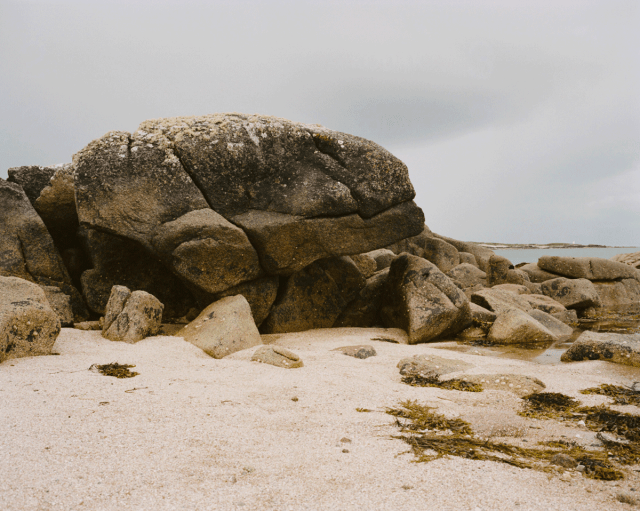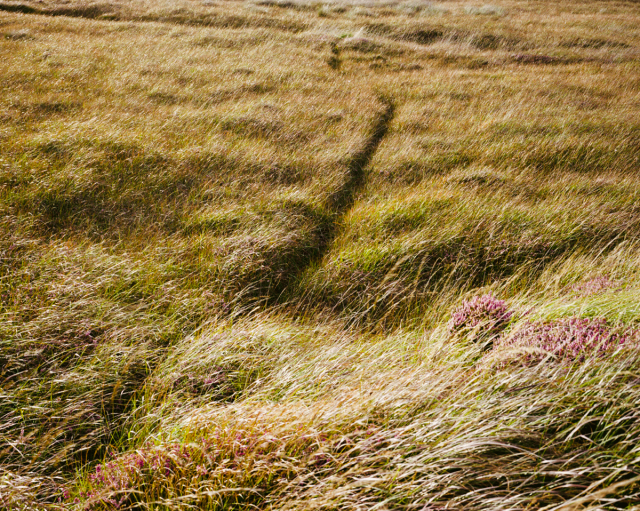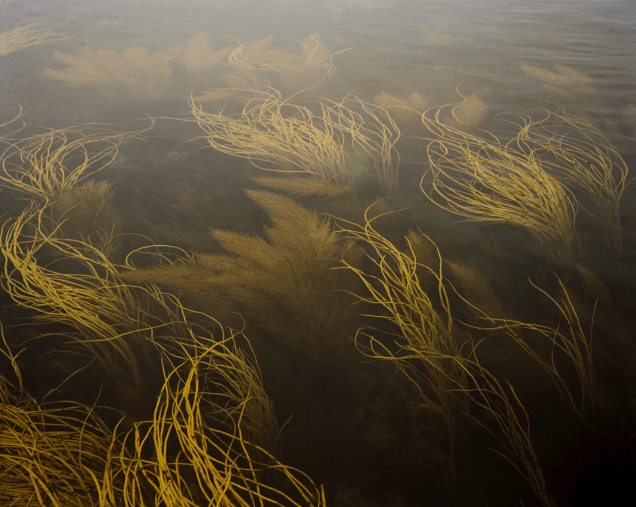Shout Shout! Let It All Out!
A woman kneels on a bed, as onlookers observe. Her face is twisted, she emits a guttural bellowing, grunts, thumps herself and spouts expletive-riddled abuse. Primal Screaming doesn’t look like much of a buzz but Caitriona Devery decided to take a plunge into the strange anyway.
Arthur Janov’s therapeutic invention was all the rage in the 1970’s and is the weird connection between John Lennon and Jenny James, founder of Primal Screaming commune Atlantis. The two were also strongly drawn to the West of Ireland.
The stories of Atlantis’ stint in Donegal and Lennon’s fascination with owning an Irish island have acquired mythical properties over the years and inspired creative expression. Kevin Barry’s 2015 book Beatlebone used Lennon’s interest in Screaming and his purchase of the uninhabited island of Dorinish in Clew Bay to create an inspired work of meta-fiction. In 2017 the TULCA contemporary art exhibition in Galway used James’ Atlantis as a point of departure to explore autonomy, community, selfhood and nature.
Arthur Janov, the founder of Primal Screaming therapy, believed that repressing traumatic experiences from childhood results in dysfunction and neurosis. Participants were encouraged to fully express themselves, physically and even violently. Janov said at the time that the treatment “is not a celebrity therapy. It’s for people who are suffering”, but his cathartic promises inevitably attracted figures in the celebrity world. One of the most famous was Lennon who had sessions with Janov at Tittenhurst Park.
A few year later, in 1974, the Atlantis commune set up shop in a dilapidated house in Burtonport, Co. Donegal. Led by the iconoclastic Jenny James, they were inspired by Janov’s teachings. James believed that society at the time put a premium on “mediocrity, niceness, and being sweet and polite”. At the commune, no emotion was disallowed, in the interests of honesty. They were encouraged to express everything, physically and even violently.
Was it an escape or an attempt at utopia? Matt Packer, who curated TULCA last year, says “The Screamers were both a rejection of mainstream society and an attempt to create another kind of society. In her books, Jenny James is quite antagonistic about what she saw as the falsity and technocracy of modern living, and in a sense the Screamers were driven by that opposition.”
As you might imagine, the community of truth-seekers caused a ruckus in sleepy 70’s rural Donegal. There were accusations of sexual promiscuity, cultish brainwashing, even kidnapping. Their energetic, loud verbal releases led locals to call them The Screamers. They would last in Burtonport for six tumultuous years before fleeing to a more rudimentary and isolated settlement on the island of Innishfree a few years later. Another similarity with Lennon, who had purchased Dorinish in 1967.
The Screamers brought a frisson of excitement to the Irish airwaves on more than one occasion. Filmmaker Bob Quinn filmed them but RTE deemed the programme too shocking to screen. Quinn called it “the most disturbing filming experience I ever engaged in”.
Watching now, the disarming 1970’s aesthetic of the house, Brady-bunch haircuts and hippy headbands are at odds with the exorcist like howls and animalistic screaming that were a regular feature of the therapy sessions. There were reports of bullying, even physical abuse.
In Barry’s Beatlebone the characters in the Amethyst hotel, partly based on The Screamers, show the potentially dark dynamics that can arise when conventions are disbanded. I asked Kevin Barry if he thought there was anything genuinely transformative going on during the therapy.
He said, “I think a lot of what we see in the film is well-intentioned but it’s a pretty loose take on the techniques of Primal Screaming. I look at the footage and think – well at least people were trying things. At least there was a sense of opening up”.
Janov himself said that many interpretation of his ideas were dangerous. He did not endorse Atlantis. Ultimately the scandal around the commune became too much and it dissolved. Core members, including James, sailed off to Colombia to focus less on emotions and more on ecology.
Barry sees the commune’s influence in the context of the narrow Irish culture of the time. “We can’t forget how fucking dreary and monolithic a place rural Ireland was in the 1970s. So anything challenging or new or downright nutty coming into the place was at a certain level definitely welcome.”
Lennon and James weren’t the only ones to project onto Ireland mystical, otherworldly and escapist properties. Since World War II in particular, Ireland has appealed to Europeans, especially Germans, seeking a pastoral, even spiritual refuge. Is there something in the landscape itself? The freaks and weirdos that were drawn, perhaps, to Ireland’s committed refusal of modernity often imbued it with mythical properties.
This chimes with the images artist Yvette Monahan made of Inishfree for TULCA. They show a landscape haunted with uncanny traces, unclear if they are human or animal. Kevin Barry sees the West’s landscape as holding a certain resonance.
He said, “there’s a German word something like ‘weltshmerz’ which describes a feeling of homesickness for a place you’ve never been. The West of Ireland has a tendency to stir up such feelings in those who come to stay for a while. It has an odour of melancholy – in the book I called it a kind of ‘deathhauntedness’. I believe there’s something that’s soaked into the bones of the West that makes it a place for elegiacal dreaming.”
Packer was interested in the particularity of Ireland of that time, and why it become such a focus for the projections of those seeking alternatives, both social and political. He says, “Ireland in the 70’s provided the notion of living off-grid and outside the trappings of mainstream society. That same notion is close to a colonialist viewpoint. It was additionally interesting for me that the region of Donegal where the Screamers’ found home was also a place steeped in Republican activism during a time of peak conflict”.
A steady flow of hippies of all kinds into rural parts of Ireland continued into the 1980’s and 1990’s, New Age travelers, ravers, and ruralists. But perhaps as Ireland finally joined the 20th century, its appeal to these alternative-seekers declined. What happened to the hippies?
Packer says “I was interested in this question in my initial thinking around TULCA, but at the same time I always understood that it’s not a very exacting question. I was trying to explore the legacy of a particular kind of liberalism that existed in my parents’ generation that seemed to absent today; either absorbed into a broader mainstream culture, or discredited, or else reduced to a lifestyle anachronism”.
Packer offers one argument that pluralism and liberalism have made strides and reduced the need for struggles against a monolithic mainstream. Capitalism’s increasing sophistication since then and its ability to co-opt dropping out may be another. He says perhaps “a genuine refusal of mainstream culture now requires a more extreme approach. After all, the Screamers sailed to Colombia, where they remain today.”
Both book and curatorial intent explore longings for escape, for truth, in the context of quixotic projections onto the Irish landscape. They show how much has changed, and how much has stayed the same. On this Packer is cautious, and careful not to fetishise the Screamers.
“It was important that the exhibition didn’t patronise the past and the efforts of people that were trying to live differently in the 1960s and 70s. I’ve always tried to resist that kind of approach, and I think it’s actually quite dangerous to imply the immutability of our present moment”.
In Rabble 15, Print Edition by Caitriona Devery. September 24, 2018
Beatlebone by Kevin Barry was published by Canongate in 2015
Image credits: Yvette Monahan



